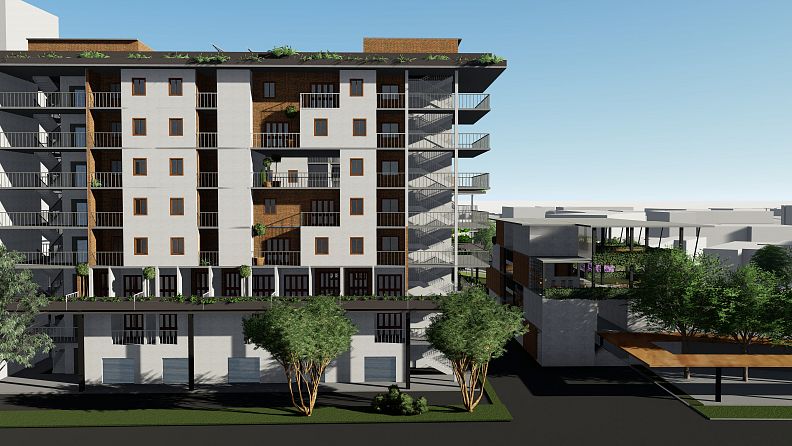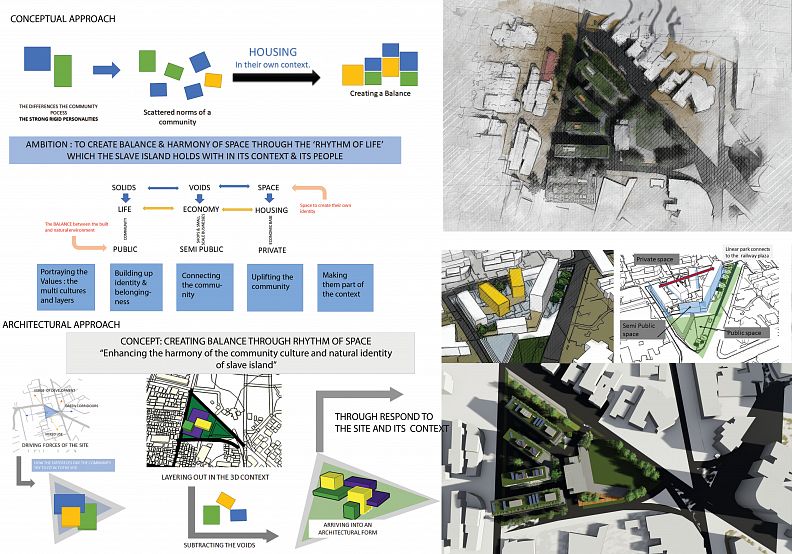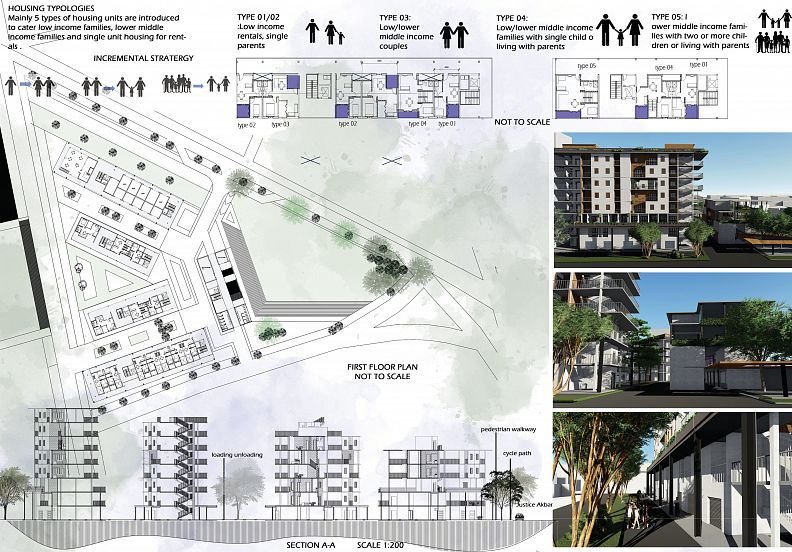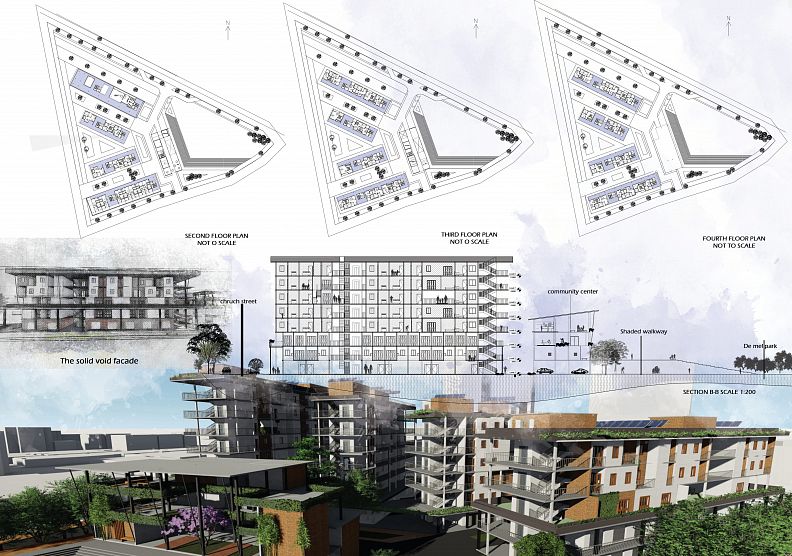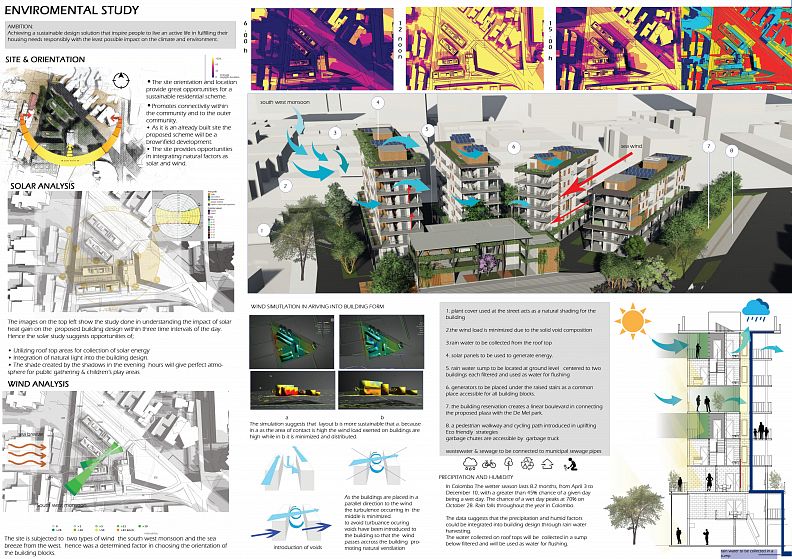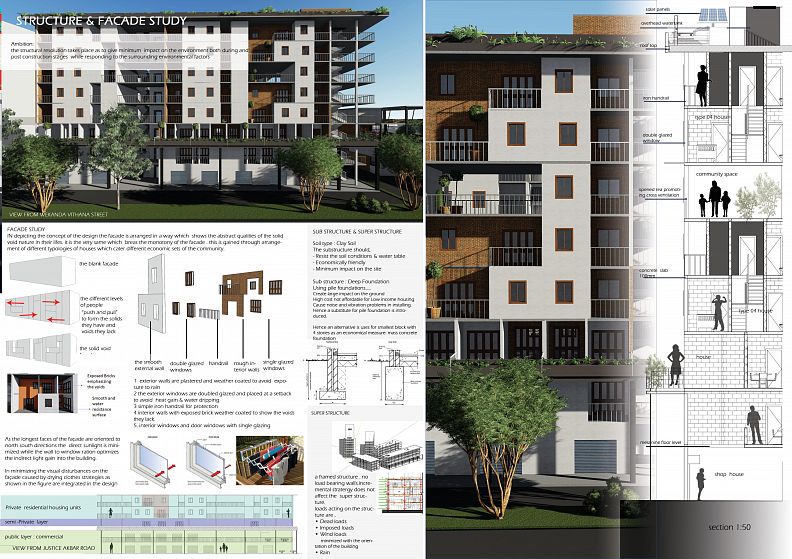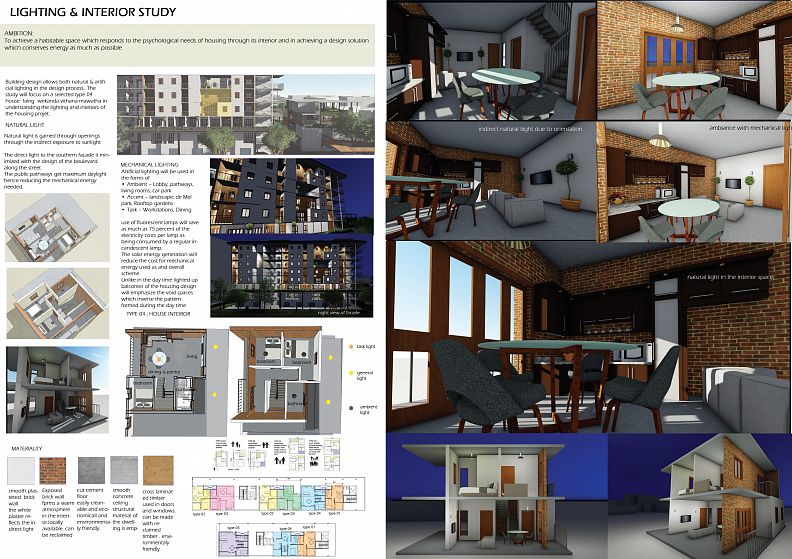Housing In Slave Island, Sri Lanka

Project idea
This project includes a design proposal carried out in designing housing for a selected low income community in slave island Colombo.
The design process focused on arriving into an architectural design through analysis of opportunities of site , conceptual formation up to a resolved design under environment, structure & façade study, lighting and interior study in the process of achieving an comprehensive housing design in the urban context of Colombo.
Project description
The slave Island, Colombo holds its name as a home for the lower income community. despite its historical values it is being exposed to rapid urbanization hence the originality and qualities of the context is observed to be degrading.
In the recent past the slave island in the city of Colombo holds its reputation as home for the underserved community. Although having labelled as such, the community of the region still holds their values and norms together despite of their multi-cultural and, multi ethnic nature. The different levels of their qualities of life have woven the identity of the slave island into a place which has built of “different rhythms of life “ which hold the harmony of it.
They have created A BALANCE between their lives and the place they live. The solid stable nature; The voids their lives lack and the future they dream to uphold.
Yet their economic stability and contextual characteristics degrades these norms where their above attributes of life are scattered which defines them as a low-income low level community.
As 'house' is the economic base of a family addressing Housing needs of a community will uplift the IDENTITY they hold while stabilizing the BALANCE of people and their user environment.
The designed aimed at creating Balance and Harmony of space through the "Rhythm of Life " which the Slave Island Holds with it, in its Context & its people.
Technical information
The projects was derived with the technical analysis of its Environment, structure & façade , lighting and interior to achieve maximum of the opportunities the context offers.it focussed on building a passive design which is affordable and that responds to the incremental strategies of the community.
The Environmental strategy was to Achieve a sustainable design solution that inspire people to live an active life in fulfilling their housing needs responsibly with the least possible impact on the climate and environment. This was achieved through the adaptations to the local climate, solar and wind study and the use of renewable energy at the site.
The structural resolution focused to give minimum impact on the environment both during and post construction stages while responding to the surrounding environmental factors. The solid void façade structure is a key element which showcases the nature of the community that's living. it is abstracted from the placement of different typologies of houses which serve to the different types of families of the community.
Natural and Mechanical lighting used To achieve a habitable space which responds to the psychological needs of housing through its interior and in achieving a design solution which conserves energy as much as possible. The belongingness and interactive nature created through these spaces uphold the housing complex not only as a house or shelter but a 'Home' for the slave island community as place which uplifts them which opportunities of economy and their standard of living.

